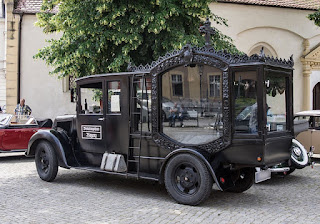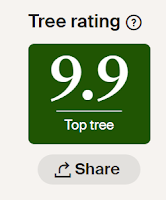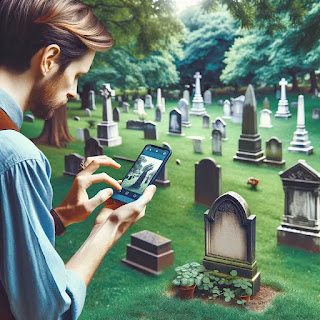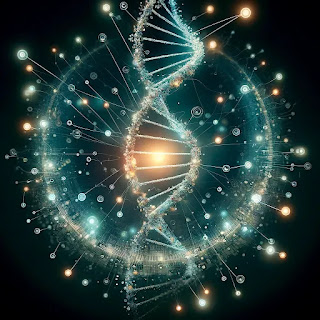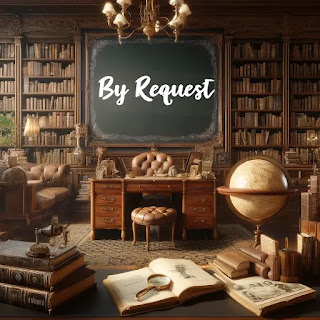FACT: I really like
Ancestry for most of my research.. It's a fantastic place to plant my tree.
FACT: I use
FindAGrave (owned by Ancestry) regularly.
FACT: I will continue to use FindAGrave, despite my feelings, because it can assist in helping me find details about some of my relatives.
UNFORTUNATE FACT: FindAGrave allows memorials of
very recently deceased persons to be created by random people scraping obituaries or listening to news stories, with little to no oversight, even when the person hasn't yet been interred (or in some tragic cases, when a body hasn't even been found).
There is a feeling of abject indifference by FindAGrave when it comes to allowing families the time to grieve and mourn their loss. There seems to be no oversight whatsoever to prevent random users from creating memorials while families are still processing. Knowing families will see their loved one's death details posted online by others and intentionally allowing them to become search results and hints on Ancestry in short order is cold, callous and shows no empathy for families of the deceased. There is a culture I call "Memorial Hoarders" on FindAGrave. Folks who scour recent obituaries of people completely unrelated to them, posting memorials as soon as the day an obit is available. In some cases, this is before the person has even been interred. While FindAGrave may limit some details from being shown for a mere 3 months, there seems to be nothing preventing people from creating these memorials in the first place. In the face of tragedy, 3 months is barely the blink of an eye. And let's be real, the name of the site is find a GRAVE not find an OBITUARY. While it's true not everyone gets buried, the intent is to "...present final disposition information as a virtual cemetery..." according to the About information on the site. The recently deceased, but not yet interred, do not fit this criteria.
Daniel Loftus, host of The Irish Genealogy Podcast, recently posted on Threads about how memorials for the victims of the Baltimore bridge collapse had already been posted. Being from Baltimore, I'm all too well aware of this tragedy and the shock the community, state and our nation feel. I can only imagine the horrific grief of the families. At least 4 memorials were already created on FindAGrave despite the fact only 2 of the 6 bodies have even been recovered. The search for the other 4 victims has been postponed due to the challenges of debris in the water. The memorials list all the bodies as cremated even though they hadn't all been found. I can only imagine the pain and horror the families would feel if they see (or have seen) these memorials.
Daniel followed up his social media post with a podcast titled Episode 7 - Find a Grave brilliantly detailing the out of control problem in more detail (including memorials created about the Baltimore bridge tragedy as well as several other prominent tragic events). I typically don't listen to podcasts, but I listened to every word of this one. I'm not going to rehash all the points he covers because he does an excellent job explaining the concerns. I simply encourage you to listen and draw your own conclusions.
I can only speak to my personal experience regarding FindAGrave. After listening to the podcast, I curiously went to see if my father (who passed November 7, 2022) had a memorial. Indeed he did! And, the memorial wasn't created by anyone in our family. Going back in time, on November 8th, I was making funeral arrangements. Later in the evening, the obituary went online. By November 9th, someone unrelated to me created a memorial, scraping and posting the full obituary. In this case, the memorial was posted a full 6 days before the body was interred (incontrovertible proof is in the obituary). When my father first passed, a relative posted about his death on Facebook less than an hour after I started notifying family. I was shocked, hurt and angry - it was not their story to tell. I hadn't even had time to process when it was out already out there. Undoubtedly, I'd have been even more upset had I known someone created a memorial on FindAGrave during a time when we hadn't even grieved the loss. I did request the memorial be transferred to me for management. To give proper credit, the creator did so willingly and very quickly - with no trouble whatsoever. But it doesn't negate FindAGrave allowed the memorial to be created in the first place, in contradiction to their policies, before the burial even happened. As to memorials I manage? I have a whopping 5. As of now, all are my direct ancestors.
It's sure good for FindAGrave to get so much "free help" adding to their site isn't it? From the outside looking in, these Memorial Hoarders seem to view this almost as a game. Who can get the most memorials? I imagine they've fooled themselves into thinking they're providing a service - but it really seems more like a contest. Porch pirates, steal your Amazon packages, Memorial Hoarders steal your relatives and loved ones. We shouldn't have to ask to get back control of the details of our own family. We should be given an appropriate amount of time to determine if we wish to create a memorial ourselves.
Supposedly, in January 2022, FindAGrave tightened up a bit as per this post from Amy Johnson Crow. It infers they realize people who are creating large numbers of memorials may not be related to the deceased and they were adding controls to help reduce this occurrence of "immediate memorials", including limiting the details shown. I say supposedly because the person who created the memorial for my father has added over 12,000 memorials! Granted, the person has been on the site for many, many years...but simple division across all those years shows an average off 633 memorials per year being created. Seriously? You think this person isn't bulk creating memorials for the numbers? Exactly how are the new policies helping? Just limiting details does nothing to stem the creation of memorials in the minutes, hours and days following a death.
The solution is maddeningly simple. Only two fields are required. Date of burial and relationship to the deceased. I'd propose if a memorial creation date is within 3 months of the death date and/or prior to the actual burial date, do not allow the creation by anyone other than an immediate family member. Certainly if immediate family chooses not to do so within 90 days, then perhaps letting any related family member create it is appropriate. If it were up to me, for the first year, only someone who can prove a relationship of some kind to the deceased should be allowed to create a memorial. There are times when someone passes and it takes months just for cause of death to be established. Posting a FindAGrave memorial simply isn't at the top of the list of things to do when someone passes. Even 90 days could still be a psychological trigger for some families. After a year, let anyone else have at it. I rather suspect scraping obits would lose it's appeal and the game of collecting memorials much less gratifying if creators had to wait a full year to do it. And if a contributor has more than a given number of recently deceased memorials in a short period of time, they should simply be suspended from creating anything new for 90 days. Again, it takes the fun out of watching the numbers go up if you can't create new memorials. Even a person with 10 recent death memorials in a month would be suspect to me. And if someone continued to ignore the rules, just ban them entirely.
I absolutely DO value FindAGrave volunteers who respond to requests for photos. Not all of us live near enough to obtain them ourselves. And taking large numbers of photos of actual headstones in one cemetery visit is very different than scraping obits as soon as they're published. In these cases, the volunteers are providing a huge and invaluable service giving their time - and it is very much appreciated. I've been fortunate enough to have someone do this for me on one occasion, and I was beyond grateful. Or having someone willing to go look for and potentially locate a grave is a generous service done by some. But simply scraping recent obits to create memorials for the thrill of the numbers is not a service - it is an unforgiveable transgression and violation of the privacy of mourning families. In fact, it could contribute to their distress during such a difficult time.
The Community Rules on FindAGrave say in part "...Ancestry prohibits users of the Services from engaging in any activity that Ancestry, in its sole discretion, determines to be offensive, interferes with the rights of others, or causes harm to any person or entity. Ancestry can’t be responsible for the content our users create and share in the community..." They've basically given free reign to the users by saying they can't be responsible for their actions. How exactly do they monitor when turning a blind eye to the problem very well may be causing harm or distress to families? You think a huge, for-profit company is going to find anything objectionable about volunteers doing free work? Though they supposedly made changes to help combat this issue, it certainly doesn't appear there's anyone watching or even attempting to enforce them. And why would they if they can take the attitude they aren't responsible? Why don't they just come out and say it? They don't really CARE, they just want to give the illusion they do. As long as the site is making money from ads, why would they want to make any substantial change to the practice?
Please consider sharing this post and Daniel's podcast.The more light we shine on this problem, the better the chance of eventual change. FindAGrave is absolutely a genealogically useful site - it can also be a source of distress and discomfort. The site would be just as beneficial if there were an appropriate waiting period to create memorials. I use FindAGrave many times each week, and will continue to do so...but it in no way means I condone the actions of those who are completely insensitive to loss and grief, and who clearly have no respect at all for an appropriate period of mourning. Grief is different for everyone and there is no one size fits all length of time a family mourns. But the genealogy community could establish guidelines for allowing families at least some time to grieve. I personally believe there should be simple enforced precautions put in place to show respect for families who've recently lost a loved one (especially in the face of horrific tragedy). If families choose to post information on the site quickly, it is their absolute right. Don't take away those rights just to make money or to increase memorial counts.
Image by Albrecht Fietz from Pixabay
